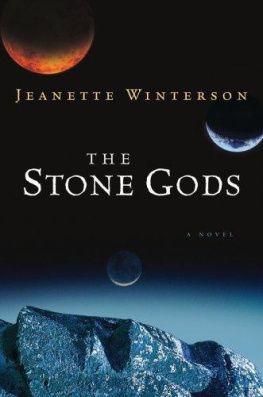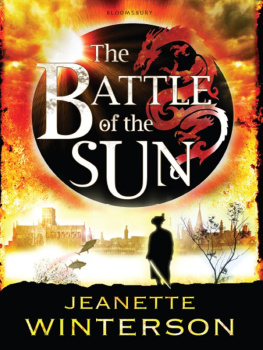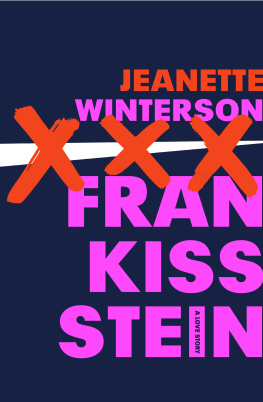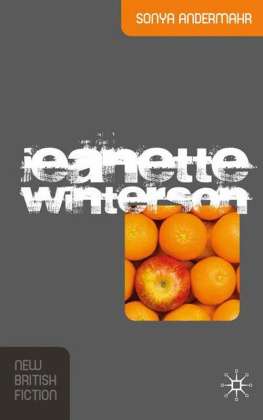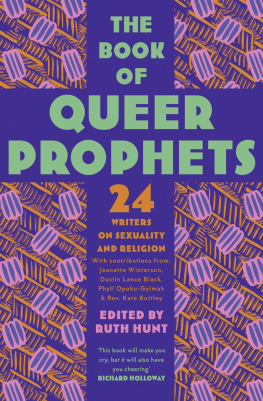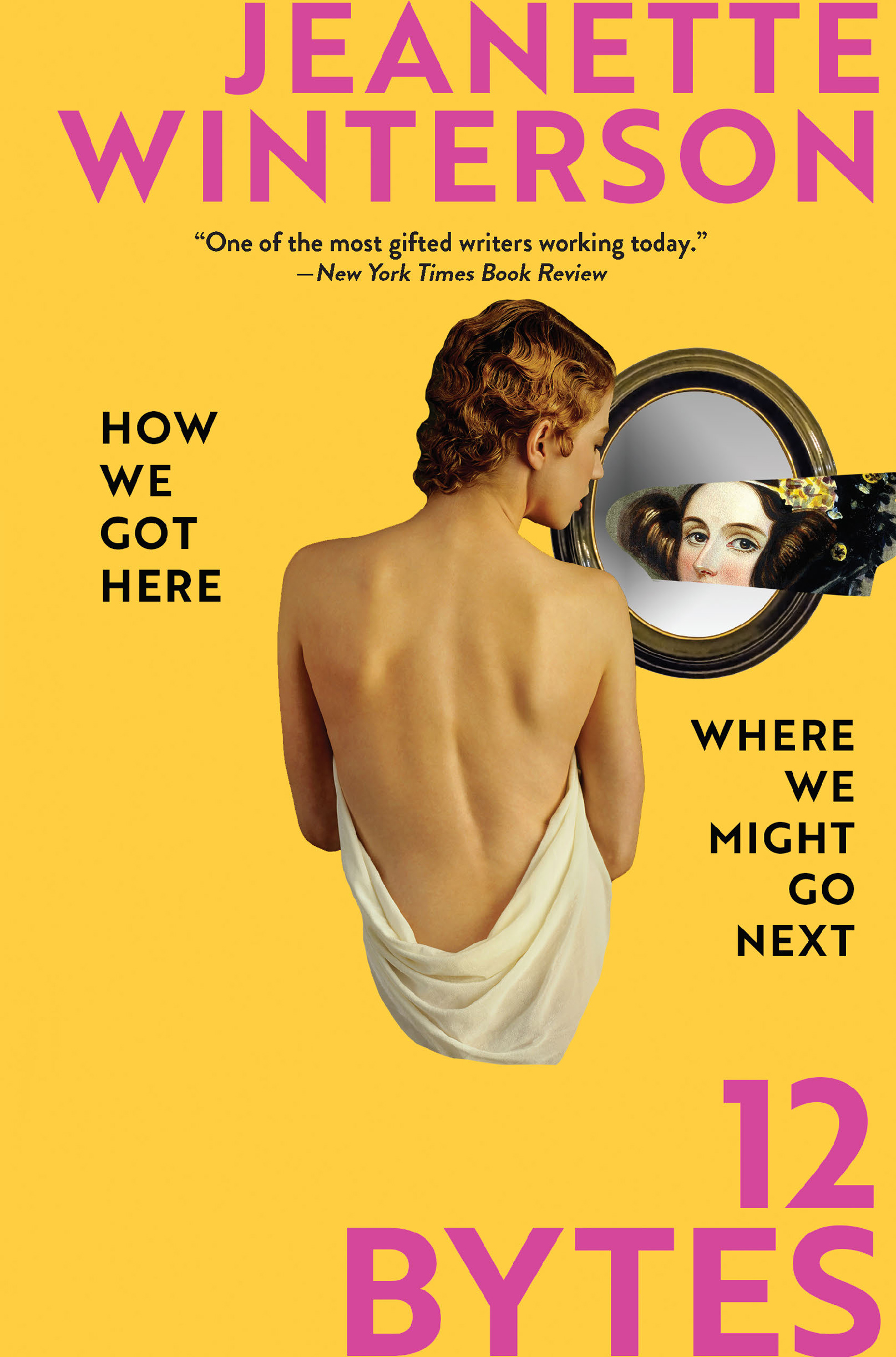Contents
Guide
Pagebreaks of the print version

Also by Jeanette Winterson
Novels
Oranges Are Not the
Only Fruit
The Passion
Sexing the Cherry
Written on the Body
Art & Lies
Gut Symmetries
The Powerbook
Lighthousekeeping
The Stone Gods
The Gap of Time
Frankissstein
Comic Books
Boating for Beginners
Short Stories
The World and Other Places
Midsummer Nights (ed.)
Christmas Days: 12 Stories and 12
Feasts for 12 Days
Novellas
Weight (Myth)
The Daylight Gate (Horror)
Non-fiction
Art Objects: Essays in Ecstasy and Effrontery
Why Be Happy When You Could Be Normal?
Courage Calls to Courage
Everywhere
Collaborations
LAND (with Antony Gormley and Clare Richardson)
Childrens Books
Tanglewreck
The Lion, the Unicorn and Me
The King of Capri
The Battle of the Sun
12 BYTES
HOW WE GOT HERE WHERE WE MIGHT GO NEXT
JEANETTE WINTERSON

Grove Press
New York
Copyright 2021 by Jeanette Winterson
Jacket details: woman Michael Nelson/Trevillion Images; portrait of Ada Lovelace by Alfred Chalon Science Museum/SSPL; frame Getty Images
All rights reserved. No part of this book may be reproduced in any form or by any electronic or mechanical means, including information storage and retrieval systems, without permission in writing from the publisher, except by a reviewer, who may quote brief passages in a review. Scanning, uploading, and electronic distribution of this book or the facilitation of such without the permission of the publisher is prohibited. Please purchase only authorized electronic editions, and do not participate in or encourage electronic piracy of copyrighted materials. Your support of the authors rights is appreciated. Any member of educational institutions wishing to photocopy part or all of the work for classroom use, or anthology, should send inquiries to Grove Atlantic, 154 West 14th Street, New York, NY 10011 or permissions@groveatlantic.com.
First published in 2021 in the UK by Jonathan Cape, an imprint of Vintage.
Published simultaneously in Canada
First Grove Atlantic edition: October 2021
Library of Congress Cataloging-in-Publication data is available for this title.
ISBN 978-0-8021-5925-0
eISBN 978-0-8021-5926-7
Grove Press
an imprint of Grove Atlantic
154 West 14th Street
New York, NY 10011
Distributed by Publishers Group West
groveatlantic.com
These essays are for my godchildren, Ellie and Cal Shearer. And also Lucy Reynolds. Lucy is studying the past in order to understand the present and the future. (That is what the humanities are for.) Ellie is writing her own books now. Cal is in a lab in Oxford, building a brain.
Contents
How These Essays Came About
In 2009 4 years after it was published I read Ray Kurzweils The Singularity Is Near. It is an optimistic view of the future a future that depends on computational technology. A future of superintelligent machines. It is also a future where humans will transcend our present biological limits.
I had to read the book twice once for the sense and once for the detail.
After that, just for my own interest, year-in, year-out, I started to track this future; that meant a weekly read through New Scientist, Wired, the excellent technology pieces in the New York Times and the Atlantic, as well as following the money via the Economist and Financial Times. I picked up any new science and tech books that came out, but it wasnt enough for me. I felt I wasnt seeing the bigger picture.
How did we get here?
Where might we go?
I am a storyteller by trade and I know everything we do is a fiction until its a fact: the dream of flying, the dream of space travel, the dream of speaking to someone instantly, across time and space, the dream of not dying or of returning. The dream of life-forms, not human, but alongside the human. Other realms. Other worlds.
Long before I read Ray Kurzweil, I read Harold Bloom, the American Jewish literary critic, whose pursuit of excellence was relentless. One of his more private books in that he was unravelling something for himself is The Book of J (1990), where Bloom looks at the earliest texts that were later redacted and varnished to become the Hebrew Bible. The first 5 books, the Pentateuch, were written around 10 centuries before the birth of the man Jesus so they are separated from us by around 3,000 years.
Bloom thinks that the author of those early texts was a woman, and Bloom was certainly no feminist. His arguments are persuasive and it delights me that the most famous character in Western literature God, the Author of All was himself authored by a woman.
In the exploration of this story, Bloom offers his own translation of the Blessing the Blessing promised by Yahweh to Israel but really, the blessing any of us would want. And it isnt Be fruitful and multiply thats a command, not a blessing. It is this: More Life into a Time Without Boundaries.
Isnt that what computing technology will offer?
Bloom points out that most humans are fixated on space without boundaries. Think about it: land-grab, colonisation, urban creep, loss of habitat, the current fad for seasteading (sea cities with vast oceans at their disposal).
And space itself the go-to fascination of rich men: Richard Branson, Elon Musk, Jeff Bezos.
When I think about artificial intelligence, and what is surely to follow artificial general intelligence, or superintelligence it seems to me that what this affects most, now and later, isnt space but time.
The brain uses chemicals to transmit information. A computer uses electricity. Signals travel at high speeds through the nervous system (neurons fire 200 times a second, or 200 hertz) but computer processors are measured in gigahertz billions of cycles per second.
We know how fast computers are at calculation thats how it all started, back in Bletchley Park in World War Two, when the human teams just couldnt calculate fast enough to crack the German Enigma codes. Computers use brute force to process numbers and data. In time terms, they can get through more, faster.
Acceleration has been the keyword in our world since the Industrial Revolution. Machines use time differently to humans. Computers are not time-bound. As biological beings, humans are subject to time, most importantly our allotted span: we die.
And we hate it.
One of the near-future breakthroughs humans can expect is to live longer, healthier lives, perhaps much longer, even 1,000-year lives, if AI biologist Aubrey de Grey is right. Rejuvenation biotechnology will aim to slow down the accumulation of ageing damage in our organs and tissues, as well as repairing or replacing what is no longer fit for purpose.
More life into a time without boundaries.
And if that doesnt work there is always the possibility of brain upload, where the contents of your brain are transferred to another platform initially not made of meat.



